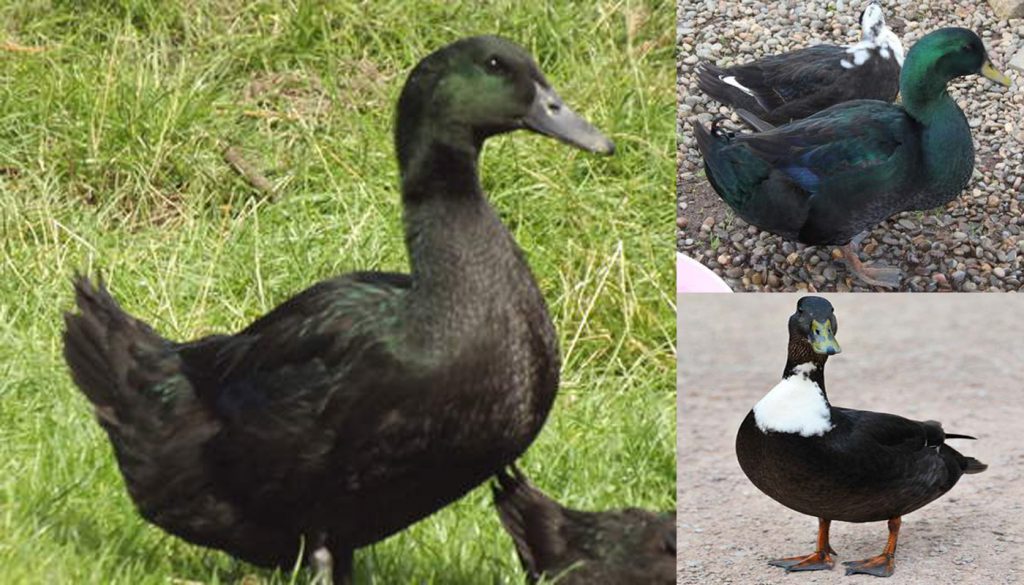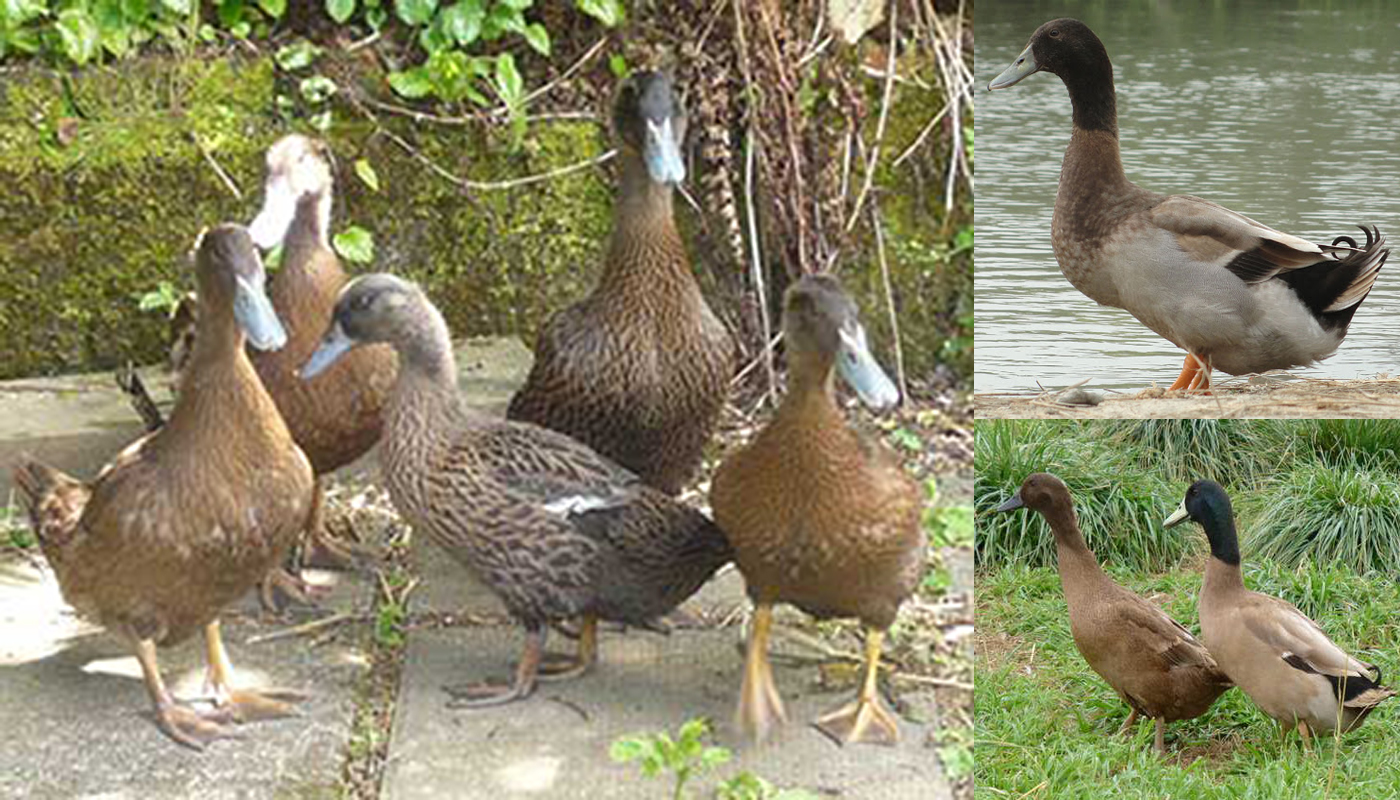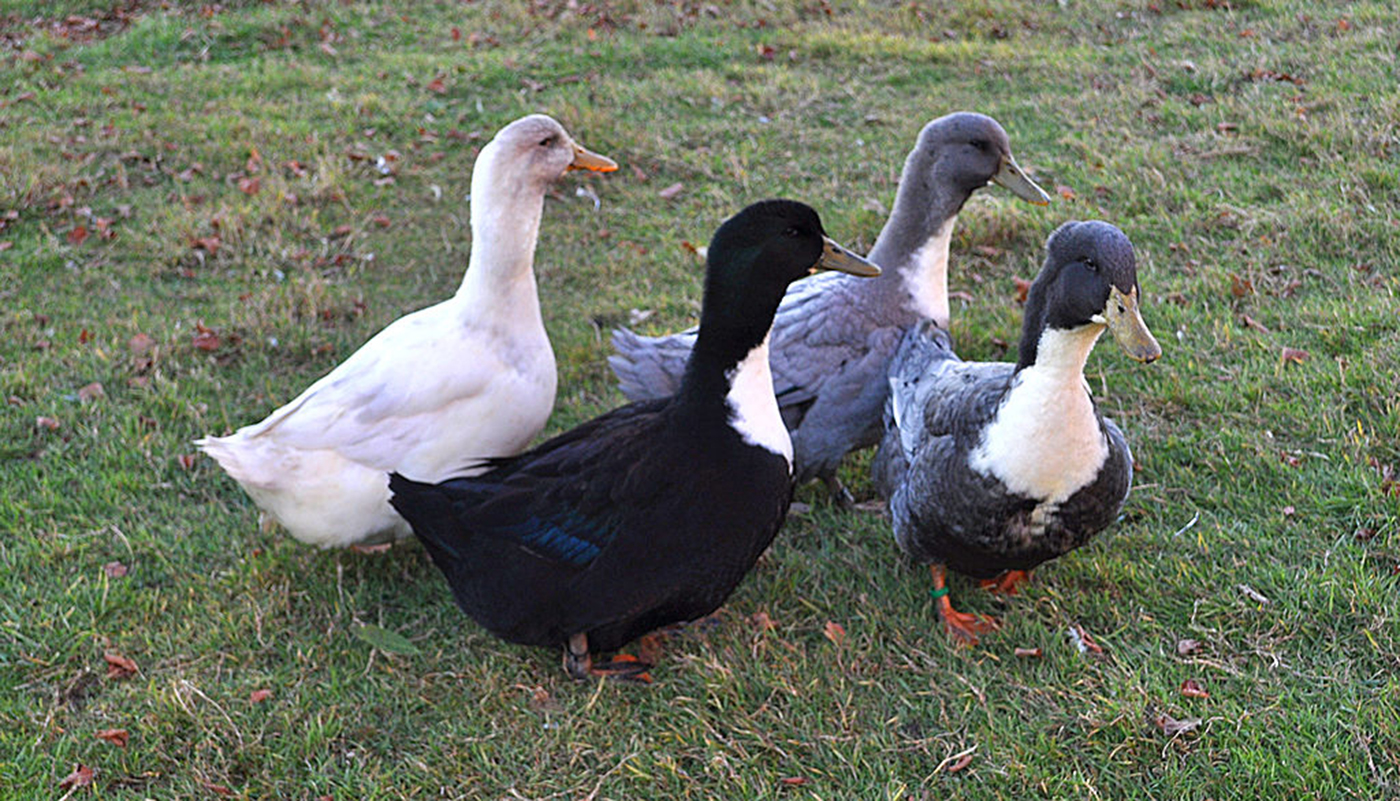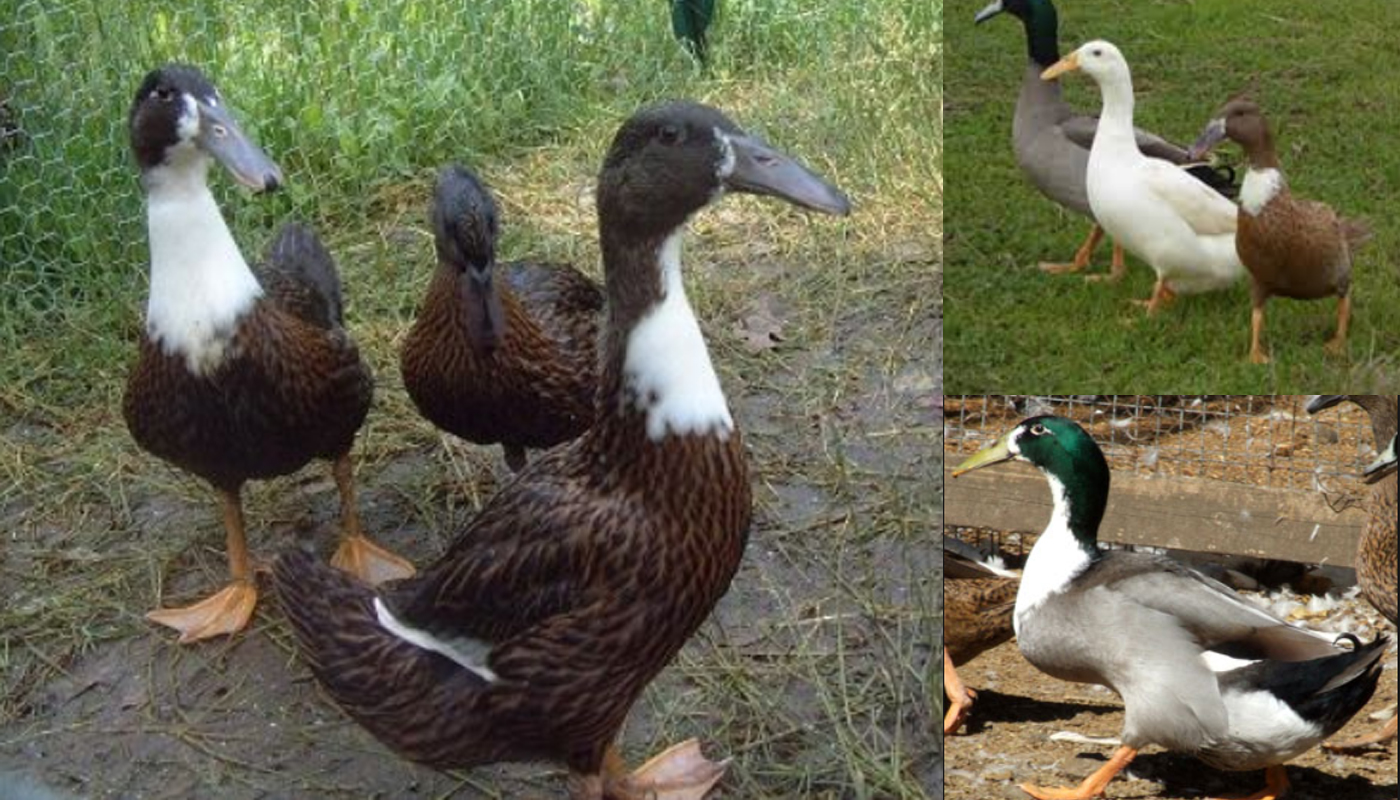
The Pomeranian ducks are either black with a green sheen or blue with a deep purple sheen.
They have a white bib on their breast which along with their black beaks and legs make them quite unique.
It has a long full body with the females looking much like the males except the males tend to be a bit shinier with curled tail feathers.
They are a dual-purpose breed but do no produce that many white or greenish tinted eggs in a year.
A rare duck breed that will be a center point to any back-garden duck flock.
GENERAL INFORMATION |
|
|---|---|
| Country of Origin: | Germany |
| American Poultry Association: | Not Recognized by the American Poultry Association |
| Duck Category: | Not Categorized |
| Duck Class: | Not Classified |
| Colors: | Black,Blue |
| Other names known by | Pommern or Pommernente |
| Good starter duck? | Yes |
| You may Also Like: | TOP 10 GOOD STARTER DUCK BREEDS |
| Bantam Variety Available? | No |
| You may Also Like: | 10 BEST BANTAM DUCK BREEDS |
APPEARANCE / IDENTIFICATION
| DUCK BITS | DESCRIPTION | COLOR | |||||||
|---|---|---|---|---|---|---|---|---|---|
| EYES⇒ | Same for M & F | Dark Brown | |||||||
| BILL⇒ | Same for M & F | Dark | |||||||
| *Black bean tipped | |||||||||
| CRESTED? | No | ||||||||
| LEGS⇒ | Same for M & F | Dark | |||||||
| Long legs positioned proportionally apart to their bodies | |||||||||
| FEET⇒ | Same for M & F Medium Sized |
Dark | |||||||
| Medium sized feet | |||||||||
| WINGS⇒ | Same for M & F | Dependent on the color variety | |||||||
| Blue variety – Blue wings Black variety – Black wings with a green shine |
|||||||||
| FEATHERS⇒ | Same for M & F | Dependent on the color variety | |||||||
| Blue variety – Blue feathers, with the male having a bluer head than the females. Black variety – Black feather with a green sheen and the males head is more green than the females Both varieties have a white bib/splotch on their breast. |
|||||||||
| SKIN COLOR⇒ | Same for M & F | White | |||||||
| Can go yellowish depending on what they are fed | |||||||||
| AVERAGE WEIGHT⇒ |
|
||||||||
| *Bean: This is also called the nail. It is a small round bump found at the end of the duck’s bill. It is used for defence and to catch insects. It is almost like a fingernail and is damaged can grow back. It can also get overgrown much like fingernails if they do not have something to grind it down on. | |||||||||
| ** Note: This is an average weight for the male duck and not a guaranteed weight | |||||||||
USE/PURPOSE |
||||||||||||||||||||||||||||||||||||
|---|---|---|---|---|---|---|---|---|---|---|---|---|---|---|---|---|---|---|---|---|---|---|---|---|---|---|---|---|---|---|---|---|---|---|---|---|
Females/Hens⇒ |
Dual purpose breed that is good for eggs and meat.
|
|||||||||||||||||||||||||||||||||||
Males/Drakes⇒ |
Breeding, meat and an excellent watchdog
|
TEMPERAMENT |
|
|---|---|
| “They are quite a temperamental breed. They can be grumpy and aggressive or skittish. But they can also be calm and friendly. They will defend their home with everything they have!” | |
| Good with Kids? | I would not leave a kid unattended with this breed as they can be unpredictable |
| You may Also Like: | 10 BEST DUCK BREEDS TO KEEP AS FAMILY PET |
| Flyers? | They could possibly vault themselves over a wall. But in general, are really poor flyers and do not really even try to fly. |
| Noisy Birds? | They can be rather chatty |
| Interact with other ducks? | They do not mind interacting with other ducks but can get territorial |
| Best duck breeds to mix them with: | They prefer sticking to their own breed but can be mixed with most any domesticated duck breed. You may need to raise them together from ducklings! . |
| Other animals? | They are not too fussed with other domestic animals. They will attack back if a dog or cat tries to attack them. It is best to watch dogs and cats around any duck breed. |
IDEAL ENVIRONMENT |
|
|---|---|
| “Medium to large garden with some nests placed around the water area.” | |
| Ideal Garden Size? | Medium to large |
| Can be Confined? | They do not take to confinement well |
| Free-Range | They are great foragers and like to hunt around freely |
| Penned Free-Ranging? | They would need quite a bit of penned space |
| Foragers | They are great foragers and will rid the garden of most types of pests |
| Endures heat well | Yes |
| Endures cold well | Yes |
| Special Requirements? | No |
| Ideal Duck House: | A duck hutch that is warm, cozy and well ventilated. They need a nice safe comfortable environment big enough to house the flock without overcrowding. |
| Ideal Duck Pond: | A nice small shallow pond with a bit of greenery in. Or a splash poo. |
| Flock/Paddling Size: | Ducks need a minimum of two ducks in their flock. The more the better. |
| You may Also Like: | 22 Best DOMESTIC DUCK BREEDS |
GOOD TO KNOW |
|
|---|---|
| Special Care/Attention Requirements? | They are very rare in the USA it is best to check with the breeder you purchase them at for any particular requirements the breed may have. |
| Known Predators: | Check with animal control in your area for known predators |
| Conservations Status: | Not Listed For more information on poultry, conservation status, check the American Livestock Conservancy Website |
| Breeders Clubs: | It is best to check with the American Poultry Association for various clubs and or organizations. |
| Where to buy them: | Check with your local poultry dealers and or farmers, the APA or check with the American Livestock Conservancy |
| Other: | If you do not want to risk having your ducks shipped check with your local poultry farms for advice on your nearest supplier. |
HISTORY
The Pomeranian is a domestic breed of duck that was developed in a Baltic sea region in Germany. This region was known as Pomerania from where the Pomeranian duck shares some common ancestors with the Swedish Blue duck and the Shetland duck.
The Pomeranian is a landrace water-fowl that is usually found on homestead and farms in the north-eastern part of Europe. Mainly on the borders of Sweden and Germany.
They were developed as a utility breed producing good quality meat and a few good-sized nutritious eggs per year.
They also bred for their sheer beauty and sometimes wonderful natures. This breed has a hit and miss kind of temperament as some are really sweet and gentle whilst others can be downright aggressive.
But the one characteristic that sticks is that they do not like strangers entering their garden and will be rather loud about it. Some owners of this rare breed report them to be excellent watchdogs!
Health
No known health issues. Ducks, in general, are less susceptible to most bird diseases than many other domesticated birds.
- Ducks need water to ensure they do not get “wet feather” disease. This is where the preening gland dries out. Water also stops them from getting pests such as mites, fleas, ticks, lice, etc.
- Well, fed ducks should hardly have any health issues.
- Any birds kept in a flock need to be dewormed. Although ducks are not as prone as other poultry they should still have a de-worming regime. Speak to a local vet or poultry experts for advice. Our article on Healthy Ducks has some great tips and advice on de-worming ducks.
 Welsh Harlequin Duck Breed – Everything You Need to Know
Welsh Harlequin Duck Breed – Everything You Need to Know The Types and Breeds of Ducks – Getting your Ducks in a Row – Part 1
The Types and Breeds of Ducks – Getting your Ducks in a Row – Part 1 Indian Runner Duck Breed – Everything You Need to Know
Indian Runner Duck Breed – Everything You Need to Know Saxony Duck Breed – Everything You Need to Know
Saxony Duck Breed – Everything You Need to Know Blue-Winged Teal – Wild Dabbling Duck Breed
Blue-Winged Teal – Wild Dabbling Duck Breed Rouen Duck Breed – Everything You Need to Know
Rouen Duck Breed – Everything You Need to Know Khaki Campbell Duck Breed – Everything You Need to Know
Khaki Campbell Duck Breed – Everything You Need to Know Cayuga Duck Breed – Everything You Need to Know
Cayuga Duck Breed – Everything You Need to Know Pekin Duck Breed – Everything You Need to Know
Pekin Duck Breed – Everything You Need to Know Bantam and Miniature Duck Breeds
Bantam and Miniature Duck Breeds Swedish Blue Duck Breed – Everything You Need to Know
Swedish Blue Duck Breed – Everything You Need to Know Hookbill Duck Breed – Everything You Need to Know
Hookbill Duck Breed – Everything You Need to Know